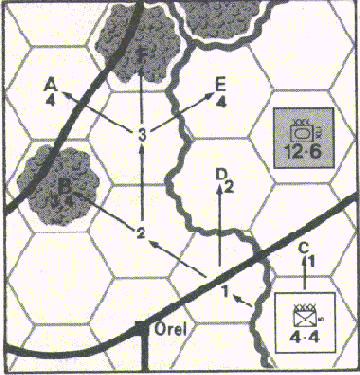Grognard.com: Wargames on the Web


Introduction to Wargaming
Wargames are games dealing with wars or battles. But a wargame is much more than just a
reenactment of the event; it is dynamic: it re-creates the situation and underlying conditions of
the event, show ing the major factors which influenced the outcome. It is also competitive: two
players vie against one another to win the game, creating a drama and intensity in game terms
which echoes that of the real battle. The combination of the two--dynamic and
competitive--results in a game that is both exciting to play and representative of the event.
People play wargames for many reasons. They enjoy playing highly competitive games. They
have an interest in history (either in general or in military history specifically)--an interest in the
events that shaped the world we all live in. Wargaming is a hobby, and, as in other hobbies,
sharing your interest in wargaming with other gamers in the hobby is fun.
A board wargame is a wargame that uses a map-board and counters as its basic elements.
Although board wargames come in many forms, most have four common features: a map,
counters, rules, and charts.
- Map
-
The map shows the area where the battle was fought, depicting important terrain, roads, or
other features that influenced the course of the battle. A map usually has a
grid superimposed on it. Hexagonal grids are most common because they are efficient and easy
for players to use, but other grids (squares, irregular-shaped areas, and so on) are possible.
Whatever the form, the grid helps to position the playing pieces and to regulate their movement
and combat.
- Counters
-
The counters represent the historical forces involved in the battle and are usually square,
die-cut pieces of cardboard. The printing on them specifies the type of military units they
represent, their nationality, and their combat and movement abilities.
Diagram showing map and counters: the arrows
show possible movement paths for a unit

- Rules
-
The rules tell how the counters move and engage in combat, what the victory conditions are,
and any other information needed to play the game. The rules to all good wargames try to
show the situation covered by the game in realistic terms: what was and was not possible on
the battlefield is or is not possible in the game. Consequently, wargame rules tend to be more
complex than those of other games (such as Chess or Risk), but players are rewarded with an
exciting and challenging game situation.
- Charts
-
The charts summarize often-used game information for quick reference during play. Most
wargames have a terrain effects chart, which specifies the effects of terrain on the movement
and combat of the counters, and a combat results table, which is used when resolving combat
between the counters.
Example chart: Combat Results Table

Battle for Moscow is your introduction to just this type of game.

Back to Battle for Moscow home page

Please report any problems with this page (bfm/intro.html).





